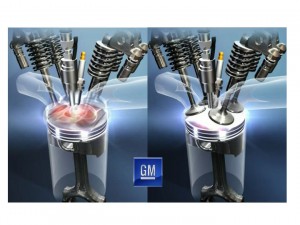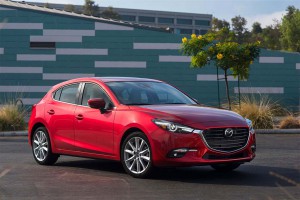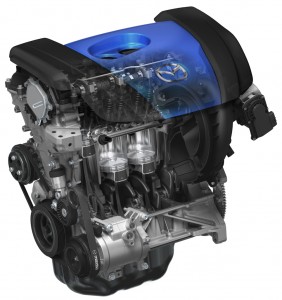Just days after Mazda announced plans to partner with Toyota on the development and production of new battery-electric vehicles, the smaller automaker said it is getting ready to launch a new breakthrough gasoline engine that could give hybrids a run for the money.
Known as a homogeneous charge compression ignition, or HCCI, engine, what Mazda plans to call the Skyactiv-X has been a long-held goal of many major manufacturers for decades. It essentially combines the best aspects of gas and diesel engines to deliver, among other things, extremely good mileage with low emissions.
“We think it is an imperative and fundamental job for us to pursue the ideal internal combustion engine,” Mazda R&D head Kiyoshi Fujiwara told reporters in Japan on Tuesday. “Electrification is necessary but,” he added, “the internal combustion engine should come first.”
Mazda has long had a reputation as something of a powertrain rebel. It initially built its reputation on the rotary engine, though problems with early versions nearly destroyed the company back in the mid-1970s. Mazda continues to work on new versions of that technology, but low mileage has made it hard to bring back to production.
(Mazda may bring back rotary – but this time as a range-extender. Click Here for more.)
The automaker has lately focused on high-efficiency gas engines with its Skyactiv-G powertrains, as well as a diesel known as the Skyactiv-D.
The Skyactiv-X apparently borrows from both. While it runs on gasoline, the engine normally uses high compression, rather than a spark to ignite the air/fuel mixture in its cylinders. There are spark plugs, but they are only used until the engine warms up. Conventional diesels normally use glow plugs when the engine is cold.
This approach is estimated to achieve fuel savings of as much as 30% when compared to a more traditional gasoline engine. That would make the Skyactiv-X potentially as efficient as a diesel and even some gas-electric hybrids.
That has enticed and intrigued a number of manufacturers over the years, including both Daimler AG and General Motors.
“HCCI delivers enhanced fuel savings without sacrificing the performance consumers have come to expect,” Dr. Uwe Grebe, former executive director for GM Powertrain Advanced Engineering, told TheDetroitBureau.com during a visit to the maker’s HCCI lab several years ago.
(Click Here for our coverage of the new Mazda-Toyota joint venture.)
As promising as HCCI technology has seemed, however, it has, until now, always been just beyond reach. Engineers have struggled to make the technology run smoothly in extreme temperatures and at higher altitudes, where air is thinner. Observers are waiting to see how smoothly the Skyactiv-X will be in real-world use, whether it will be as noisy as classic diesels and will it be jerky under hard acceleration.
The first report that Mazda was preparing an engine breakthrough appeared last January. Though Mazda did not offer specific production plans this week, a report by Japan’s Nikkei Asian Review earlier in the year predicted the HCCI engine will debut in a version of the small Mazda3 hatchback before 2020.

GM has also pushed HCCI development. The image on the left shows gas entering a regular engine's cylinder and being spark ignited. The HCCI engine on the right ignites by compression.
(Click Here for our January report.)
That would be right about the time the Hiroshima-based carmaker would begin production of electric vehicles as part of a joint venture with Toyota at a new plant in the U.S.
The Skyactiv-G was announced as part of Mazda’s “Sustainable Zoom-Zoom 2030” strategy which, the automaker said, lays out plans to meet a variety of challenges facing the auto industry.
Like virtually every other automaker, Mazda has come to the conclusion that it will need to electrify at least some of its line-up to meet increasingly tough global emissions and mileage standards. But if the HCCI engine proves as effective and efficient as Mazda is hoping, the company could reduce its dependence on electrification and continue to produce more gas-powered models.



This is what Honda is using in F1 and as we have watched the past couple of years it is not always easy to get right. But then it is a lot more intense in F1 then for street use. It will be interesting to watch and see what happens.
With cities and countries banning ic engines within ten to twenty-five years, how will this stack up pollution wise?